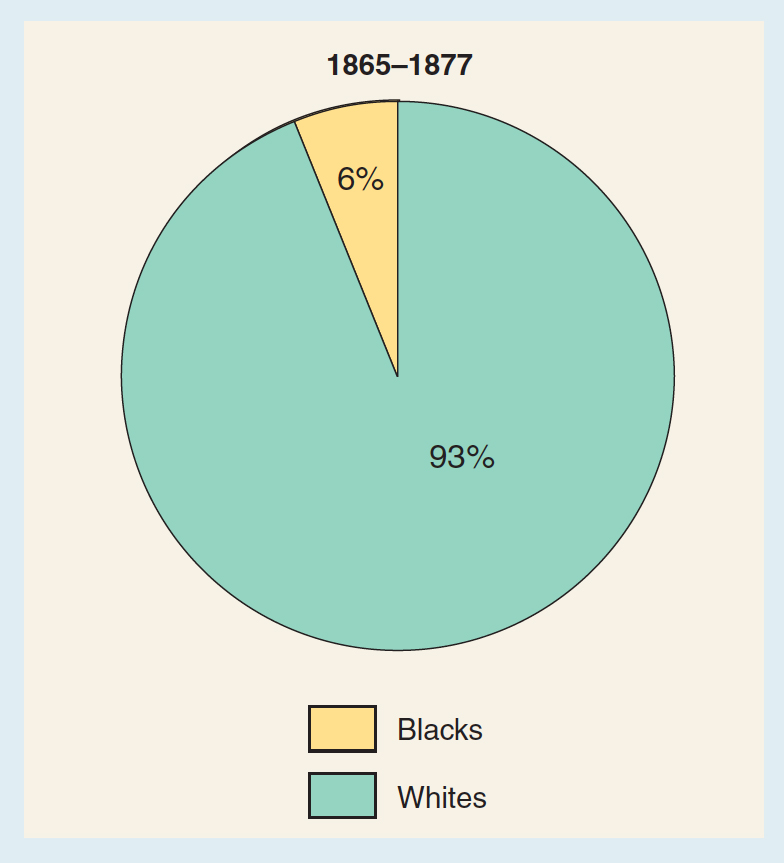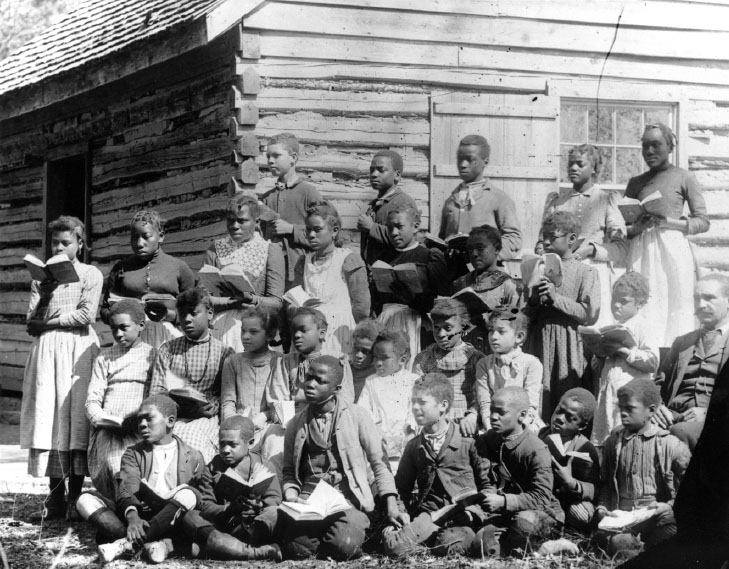Republican Rule.
Printed Page 435 Chapter Chronology
Republican Rule. In the fall of 1867, southern states held elections for delegates to state constitutional conventions, as required by the Reconstruction Acts. About 40 percent of the white electorate stayed home because they had been disfranchised or because they had decided to boycott politics. Republicans won three-fourths of the seats. About 15 percent of the Republican delegates to the conventions were Northerners who had moved south, 25 percent were African Americans, and 60 percent were white Southerners. As a British visitor observed, the delegate elections reflected "the mighty revolution that had taken place in America."

The reconstruction constitutions introduced two broad categories of changes in the South: those that reduced aristocratic privilege and increased democratic equality and those that expanded the state's responsibility for the general welfare. In the first category, the constitutions adopted universal male suffrage, abolished property qualifications for holding office, and made more offices elective and fewer appointed. In the second category, they enacted prison reform; made the state responsible for caring for orphans, the insane, and the deaf and mute; and exempted debtors' homes from seizure.
To Democrats, however, these progressive constitutions looked like wild revolution. Democrats were blind to the fact that no constitution confiscated and redistributed land, as virtually every former slave wished, or disfranchised ex-rebels wholesale, as most southern Unionists advocated. And they were convinced that the new constitutions initiated "Negro domination." In fact, although 80 percent of Republican voters were black men, only 6 percent of Southerners in Congress during Reconstruction were black (Figure 16.1). The sixteen black men in Congress included exceptional men, such as Representative James T. Rapier of Alabama (see pages 418–420). No state legislature experienced "Negro rule," despite black majorities in the populations of some states.
Southern voters ratified the new constitutions and swept Republicans into power. When the former Confederate states ratified the Fourteenth Amendment, Congress readmitted them. Southern Republicans then turned to a staggering array of problems. Wartime destruction littered the landscape. Making matters worse, racial harassment and reactionary violence dogged Southerners who sought reform. In this desperate context, Republicans struggled to rebuild and reform the region.

Activity focused on three areas — education, civil rights, and economic development. Every state inaugurated a system of public education. Before the Civil War, whites had deliberately kept slaves illiterate, and planter-dominated governments rarely spent tax money to educate the children of yeomen. By 1875, half of Mississippi's and South Carolina's eligible children were attending school. Although schools were underfunded, literacy rates rose sharply. Public schools were racially segregated, but education remained for many blacks a tangible, deeply satisfying benefit of freedom and Republican rule.
State legislatures also attacked racial discrimination and defended civil rights. Republicans especially resisted efforts to segregate blacks from whites in public transportation. Mississippi levied fines and jail terms for owners of railroads and steamboats that pushed blacks into "smoking cars" or to lower decks. But passing color-blind laws was one thing; enforcing them was another. A Mississippian complained: "Education amounts to nothing, good behavior counts for nothing, even money cannot buy for a colored man or woman decent treatment and the comforts that white people claim and can obtain." Despite the laws, segregation — later called Jim Crow — developed at white insistence and became a feature of southern life long before the end of the Reconstruction era.
Republican governments also launched ambitious programs of economic development. They envisioned a South of diversified agriculture, roaring factories, and booming towns. State legislatures chartered scores of banks and industrial companies, appropriated funds to fix ruined levees and drain swamps, and went on a railroad-building binge. These efforts fell far short of solving the South's economic troubles, however. Republican spending to stimulate economic growth also meant rising taxes and enormous debt that siphoned funds from schools and other programs.
The southern Republicans' record, then, was mixed. To their credit, the biracial party adopted an ambitious agenda to change the South. But money was scarce, the Democrats continued their harassment, and factionalism threatened the Republican Party from within. Moreover, corruption infected Republican governments. Nonetheless, the Republican Party made headway in its efforts to purge the South of aristocratic privilege and racist oppression. Republican governments had less success in overthrowing the long-established white oppression of black farm laborers in the rural South.